Transport plans underpin Iraq’s reconstruction
25 May 2023
 MEED's June 2023 special report on Iraq also includes:
MEED's June 2023 special report on Iraq also includes:
> GOVERNMENT: Sudani makes fitful progress as Iraq's premier
> ECONOMY: Iraq hits the spend button
> POWER: Iraq power projects make headway
> UPSTREAM DEVELOPERS: No place like Iraq for international oil firms
> OIL & GAS: Iraq's energy sector steadily expands
> TOTALENERGIES: Total to activate $27bn Iraq contract this year
> TRANSPORT: Baghdad approves funds for metro and airport projects

Iraq’s construction and transport sectors look to be turbocharged by its bumper 2023 budget, which envisages a series of major transport investments, alongside social infrastructure and housing plans.
With its new government in place since last year’s election and fiscally cushioned by higher oil prices, Baghdad has returned its attention to rebuilding and modernising the country’s ailing transport and social infrastructure in 2023.
Between 2016 and 2020, there were reportedly 971 reconstruction projects in the country, 718 of them completed. In 2021, the Fund for the Reconstruction of Areas Affected by Terrorist Operations completed 97 projects at a cost of ID86.7bn ($59.5m).
In 2018, Baghdad also released a forward-looking list of 157 projects in need of investment, with a $88bn price tag. These projects included the upgrade and repair of roads, bridges and airports, new city projects, and the rebuilding of hospitals, telecommunications and oil-related industries.
Despite rising revenues, Iraq’s contract awards in construction and transport decreased from $4.1bn in 2021 to only $0.6bn in 2022, according to MEED Projects.
The much larger awards value for 2021 was bolstered by several major contracts including the Ministry of Education’s selection of China’s Sinotec and Power China for the construction of 1,000 schools in different parts of the country. The contracts, worth $2bn, were part of the “oil for reconstruction” and investment deal signed between Iraq and China in 2019. Under the agreement, Chinese firms work in Iraq in exchange for 100,000 barrels of oil a day.
In 2021, the Basra Provincial Council also awarded a $312m contract to the local Al-Narjess Trading & General Contracting for the phase 2 rehabilitation of roads, drainages and sewerage networks in Zubair City.
Big transport ambitions
Although beset by delays since its 2012 commencement date, the ID7.6tn ($5.8bn) Al-Faw Grand Port masterplan is one of the most significant projects under way in Iraq. Located on the northern tip of the Gulf, it is tentatively set to be completed by 2025.
With this flagship port heading towards the finish line, Baghdad is now making moves to expand upon its logistics potential and, specifically, Iraq’s ability to connect freight from the Gulf directly to Europe.
In April, the design was completed for the high-speed ‘Dry Canal’ rail link to Turkiye planned by the Ministry of Transport (MoT).
The scheme will connect the Al-Faw Grand Port in the south with northern Iraq and Turkiye through 1,200 kilometres of new electric railway track. It is one of the region’s largest rail schemes, and aims to provide a cost-effective overland route to Europe to rival the Suez Canal.
Last year, Italian engineering services company Progetti Europa & Global was appointed to carry out feasibility studies for the project. Current plans envisage high-speed trains operating alongside conventional passenger and freight trains. The MoT plans to tender contracts for the multibillion-dollar project by the end of 2023.
In addition to the rail line, Iraq’s Ministry of Transportation is considering a new highway linking the Al-Faw Port to Turkiye.
More recently, Iraq has approved funding for the first elevated metro in its capital and the expansion of Baghdad International airport, as part of the government’s 2023 budget.
The funds will allow work to proceed on the much-delayed Baghdad elevated train project this year, while the airport expansion could start in the second half of 2023. Plans for the metro date back to the late 1970s, and if it had been built then, it would have been the first urban railway in the Arab world. The metro was also included in the 2022 budget, with the Ministry of Finance allocating $2bn to it.
Baghdad airport currently operates three terminals, each designed for 2.5 million passengers a year. The expansion will increase the capacity to 15 million passengers.
Other airport projects are also under way. In March 2022, the foundation stone was laid for Anbar International airport, and in April of that year, then prime minister Mustafa al-Kadhimi gave the green light for the rehabilitation of Mosul airport.
In 2021, China State Construction Engineering Corporation finalised a $367m deal for the revived Nasiriyah International airport in Dhi Qar, with works commencing in February 2023.
In the past few months, Iraq has also announced over 150 public service and development projects in the capital Baghdad, including 70 road developments, pavements, bridges and overpasses, estimated to cost nearly $17bn over the first two phases.
Housing capacity
Meanwhile, Iraq’s housing shortfall of three million homes is rapidly becoming a major housing crisis for the government. The situation is being exacerbated by Iraq’s rising population. According to UN projections, the country’s population is projected to swell to 50 million by 2030, from around 44 million today.
Baghdad is advancing various large residential schemes to address this, the largest expected to be awarded this year being the mixed-use New Babylon City project. This is being developed by the Ministry of Housing at an estimated cost of $1.03bn. State entities are also taking matters into their own hands. Basra Oil Company, for example, is developing a $156m residential complex for its employees.
Yet such projects alone are unlikely to meet the soaring demand for affordable housing, which looks set to remain a key priority for the government for the foreseeable future.
Exclusive from Meed
-
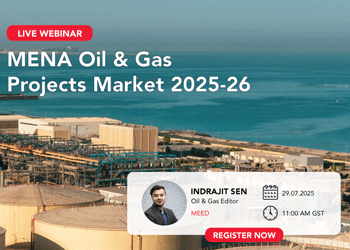 WEBINAR: Mena Oil & Gas Projects Market 2025-26
WEBINAR: Mena Oil & Gas Projects Market 2025-2610 July 2025
-
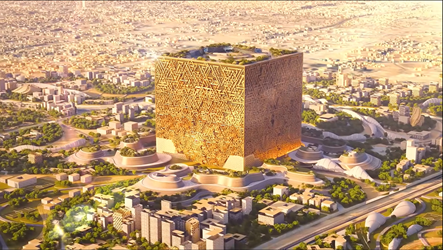
-
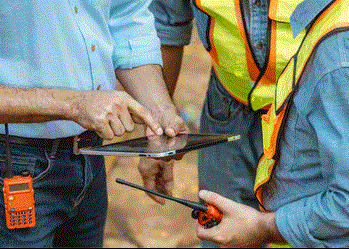 Chinese firm wins Mid Island Parkway tunnelling deal
Chinese firm wins Mid Island Parkway tunnelling deal10 July 2025
-
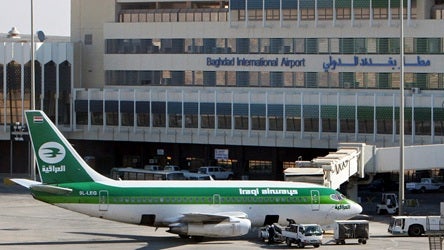 Iraq tenders Baghdad airport PPP project
Iraq tenders Baghdad airport PPP project9 July 2025
-
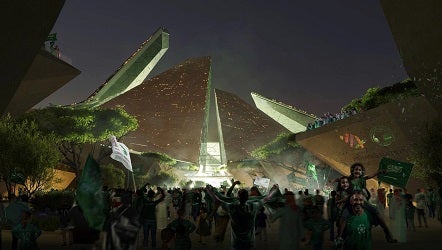
All of this is only 1% of what MEED.com has to offer
Subscribe now and unlock all the 153,671 articles on MEED.com
- All the latest news, data, and market intelligence across MENA at your fingerprints
- First-hand updates and inside information on projects, clients and competitors that matter to you
- 20 years' archive of information, data, and news for you to access at your convenience
- Strategize to succeed and minimise risks with timely analysis of current and future market trends

Related Articles
-
 WEBINAR: Mena Oil & Gas Projects Market 2025-26
WEBINAR: Mena Oil & Gas Projects Market 2025-2610 July 2025
Date & Time: Tuesday 29 July 2025 | 11:00 AM GST
Agenda:
1. Summary of the Mena oil, gas and petrochemicals projects market
2. Summary description of the main megaprojects, including project programmes
3. Analysis of active contracts and spending to date
4. Analysis of top contracts by work already awarded
5. Long-term capital expenditure outlays and forecasts
6. Highlights of key contracts to be tendered and awarded over the next 18 months
7. Top contractors and clients
8. Breakdown of spending by segment, ie, oil, gas, petrochemicals – upstream, downstream, onshore and offshore
9. Q&A session
https://image.digitalinsightresearch.in/uploads/NewsArticle/14241705/main.gif -
 New Murabba signs up South Korean firm for design works
New Murabba signs up South Korean firm for design works10 July 2025
Register for MEED’s 14-day trial access
Saudi Arabia’s New Murabba Development Company (NMDC) has signed a memorandum of understanding (MoU) with South Korea’s Heerim Architects & Planners to explore further design works on assets at the 14 square-kilometre New Murabba downtown project.
According to an official statement: “Heerim Architects & Planners will explore distinctive architectural plans that complement the development’s masterplan, with special focus on anchor assets, linear parks and smart city features.”
New Murabba CEO Michael Dyke signed the agreement last week during the company’s Investment and Partnership Forum in Seoul.
At the event, NMDC also signed an MoU with South Korea’s Naver Cloud Corporation to explore technological solutions for delivering the New Murabba downtown project.
According to an official statement: “The three-year agreement covers exploring innovative technology and automation to support the delivery of New Murabba, including robotics, autonomous vehicles, a smart city platform and digital solutions for monitoring construction progress.”
NMDC is in Seoul to examine technological offerings, assess financing options and showcase the investment opportunities available for the New Murabba downtown development.
The statement added that the excavation works for The Mukaab, the centrepiece of the overall development, have now been completed.
The Mukaab is a Najdi-inspired landmark that will be one of the largest buildings in the world. It will be 400 metres high, 400 metres wide and 400 metres long. Internally, it will have a tower on top of a spiral base and a structure featuring 2 million square metres (sq m) of floor space designated for hospitality. It will feature commercial spaces, cultural and tourist attractions, residential and hotel units, and recreational facilities.
Downtown destination
The New Murabba destination will have a total floor area of more than 25 million sq m and feature more than 104,000 residential units, 9,000 hotel rooms and over 980,000 sq m of retail space.
The scheme will include 1.4 million sq m of office space, 620,000 sq m of leisure facilities and 1.8 million sq m of space dedicated to community facilities.
The project will be developed around the concept of sustainability and will include green spaces and walking and cycling paths to promote active lifestyles and community activities.
The living, working and entertainment facilities will be developed within a 15-minute walking radius. The area will use an internal transport system and will be about a 20-minute drive from the airport.
The downtown area will feature a museum, a technology and design university, an immersive, multipurpose theatre, and more than 80 entertainment and cultural venues.
 READ THE JULY 2025 MEED BUSINESS REVIEW – click here to view PDF
READ THE JULY 2025 MEED BUSINESS REVIEW – click here to view PDFUAE and Turkiye expand business links; Renewed hope lies on the horizon for trouble-beset Levant region; Gulf real estate momentum continues even as concerns emerge
Distributed to senior decision-makers in the region and around the world, the July 2025 edition of MEED Business Review includes:
> AGENDA: UAE-Turkiye trade gains momentum> INTERVIEW 1: Building on UAE-Turkiye trade> INTERVIEW 2: Turkiye's Kalyon goes global> INTERVIEW 3: Strengthening UAE-Turkiye financial links> INTERVIEW 4: Turkish Airlines plans further growth> CURRENT AFFAIRS: Middle East tensions could reduce gas investments> GCC REAL ESTATE: Gulf real estate faces a more nuanced reality> PROJECTS MARKET: GCC projects market collapses> INTERVIEW 5: Hassan Allam eyes role in Saudi Arabia’s transformation> INTERVIEW 6: Aseer region seeks new investments for Saudi Arabia> LEADERSHIP: Nuclear power makes a global comeback> LEVANT MARKET FOCUS: Levant states wrestle regional pressures> GULF PROJECTS INDEX: Gulf projects index continues climb> CONTRACT AWARDS: Mena contract award activity remains subdued> ECONOMIC DATA: Data drives regional projects> OPINION: A farcical tragedy that no one can endTo see previous issues of MEED Business Review, please click herehttps://image.digitalinsightresearch.in/uploads/NewsArticle/14239016/main.jpg -
 Chinese firm wins Mid Island Parkway tunnelling deal
Chinese firm wins Mid Island Parkway tunnelling deal10 July 2025

Register for MEED’s 14-day trial access
Beijing-headquartered China Railway Tunnel Engineering Group has won a $60m subcontract for the tunnelling works on package 1B of the Mid Island Parkway project in Abu Dhabi.
Package 1B entails the construction of a cut-and-cover tunnel to cross the Khor Laffan Channel, which is the area between the Saadiyat and Um-Yifeenah islands.
The tunnel, which will be between 900 metres and 1 kilometre (km) long, is being constructed on a design-and-build basis and will tie in to packages 1A and 1C.
The project is being jointly constructed by a joint venture of local firm Yas Projects (Alpha Dhabi Holding) and Beijing-based China Railway International Group.
In June last year, MEED exclusively reported that Abu Dhabi's Department of Municipality & Transport had awarded contracts for three packages for phase one of the Mid Island Parkway Project (MIPP), as part of the Plan Capital urban evolution programme.
Phase one will start at the existing Saadiyat Interchange, which will connect the E12 road to the MIPP, and will end with the recently constructed Um-Yifeenah Highway.
It comprises a dual main road with a total length of 8km, including four traffic lanes in each direction, two interchanges, a tunnel and associated infrastructure works.
MIPP phase one is further divided into packages 1A, 1B and 1C, which were awarded separately.
The project ownership has been transferred from Aldar Properties to Abu Dhaibi's Department of Municipalities & Transport.
Previously, it was transferred from Abu Dhabi General Services Company (Musanada) to Aldar Properties, and the project was included in the Abu Dhabi Investment Office's public-private partnership project pipeline.
 READ THE JULY 2025 MEED BUSINESS REVIEW – click here to view PDF
READ THE JULY 2025 MEED BUSINESS REVIEW – click here to view PDFUAE and Turkiye expand business links; Renewed hope lies on the horizon for trouble-beset Levant region; Gulf real estate momentum continues even as concerns emerge
Distributed to senior decision-makers in the region and around the world, the July 2025 edition of MEED Business Review includes:
> AGENDA: UAE-Turkiye trade gains momentum> INTERVIEW 1: Building on UAE-Turkiye trade> INTERVIEW 2: Turkiye's Kalyon goes global> INTERVIEW 3: Strengthening UAE-Turkiye financial links> INTERVIEW 4: Turkish Airlines plans further growth> CURRENT AFFAIRS: Middle East tensions could reduce gas investments> GCC REAL ESTATE: Gulf real estate faces a more nuanced reality> PROJECTS MARKET: GCC projects market collapses> INTERVIEW 5: Hassan Allam eyes role in Saudi Arabia’s transformation> INTERVIEW 6: Aseer region seeks new investments for Saudi Arabia> LEADERSHIP: Nuclear power makes a global comeback> LEVANT MARKET FOCUS: Levant states wrestle regional pressures> GULF PROJECTS INDEX: Gulf projects index continues climb> CONTRACT AWARDS: Mena contract award activity remains subdued> ECONOMIC DATA: Data drives regional projects> OPINION: A farcical tragedy that no one can endTo see previous issues of MEED Business Review, please click herehttps://image.digitalinsightresearch.in/uploads/NewsArticle/14238039/main3047.gif -
 Iraq tenders Baghdad airport PPP project
Iraq tenders Baghdad airport PPP project9 July 2025
Register for MEED’s 14-day trial access
Iraq’s Ministry of Transport and the General Company for Airport & Air Navigation Services have released a tender inviting firms to bid for a contract to develop Baghdad International airport on a public-private partnership (PPP) basis.
The notice was issued in July, and the submission deadline is in September.
According to an official statement posted on its website, Iraq’s Ministry of Transport said that 10 out of 14 international consortiums that expressed interest in the project earlier this year have been prequalified to compete for the tender.
The scope of the estimated $400m-$600m project involves rehabilitating, expanding, financing, operating and maintaining the airport. It is the first airport PPP project to be launched in Iraq.
The initial capacity of the airport is expected to be around 9 million passengers, which will be gradually increased to 15 million passengers.
The International Finance Corporation (IFC), a member of the World Bank Group, is the project’s lead transaction adviser.
Iraq is already developing the Baghdad and Najaf-Karbala metro projects using a similar PPP model.
Earlier this month, MEED reported that Iraq intends to retender the contract to develop and operate the Baghdad Metro project, following the award of the estimated $2.5bn contract last year.
According to local media reports, Nasser Al-Assadi, adviser to Prime Minister Mohammed Sudani, stated that the previous developers had overestimated the project budget; therefore, the government will relaunch the entire process to implement the project.
https://image.digitalinsightresearch.in/uploads/NewsArticle/14229008/main.jpg -
 Contractors prepare revised bids for Roshn stadium
Contractors prepare revised bids for Roshn stadium9 July 2025

Register for MEED’s 14-day trial access
Saudi gigaproject developer Roshn has invited firms to submit revised commercial proposals by 24 July for a contract to build a new stadium adjacent to the National Guard facilities to the southwest of Riyadh.
Known as the National Guard Stadium, it will be delivered on an early contractor involvement (ECI) basis. It will cover an area of over 450,000 square metres and be able to accommodate 46,000 spectators.
The scope of work also covers the construction of auxiliary facilities, including training academy offices and two hotels, as well as retail and food and beverage outlets.
The firms had initially submitted bids on 8 April for the contract.
The stadium is scheduled to host 32 Fifa World Cup tournament games in 2034.
In August last year, MEED reported that Saudi Arabia plans to build 11 new stadiums as part of its bid to host the 2034 Fifa World Cup.
Eight stadiums will be located in Riyadh, four in Jeddah and one each in Al-Khobar, Abha and Neom.
The proposal outlines an additional 10 cities that will host training bases. These are Al-Baha, Jazan, Taif, Medina, Al-Ula, Umluj, Tabuk, Hail, Al-Ahsa and Buraidah.
The bid proposes 134 training sites across the kingdom, including 61 existing facilities and 73 new training venues.
The kingdom was officially selected to host the 2034 Fifa World Cup through an online convention of Fifa member associations at the Fifa congress on 11 December 2024.
 https://image.digitalinsightresearch.in/uploads/NewsArticle/14228507/main.jpg
https://image.digitalinsightresearch.in/uploads/NewsArticle/14228507/main.jpg

